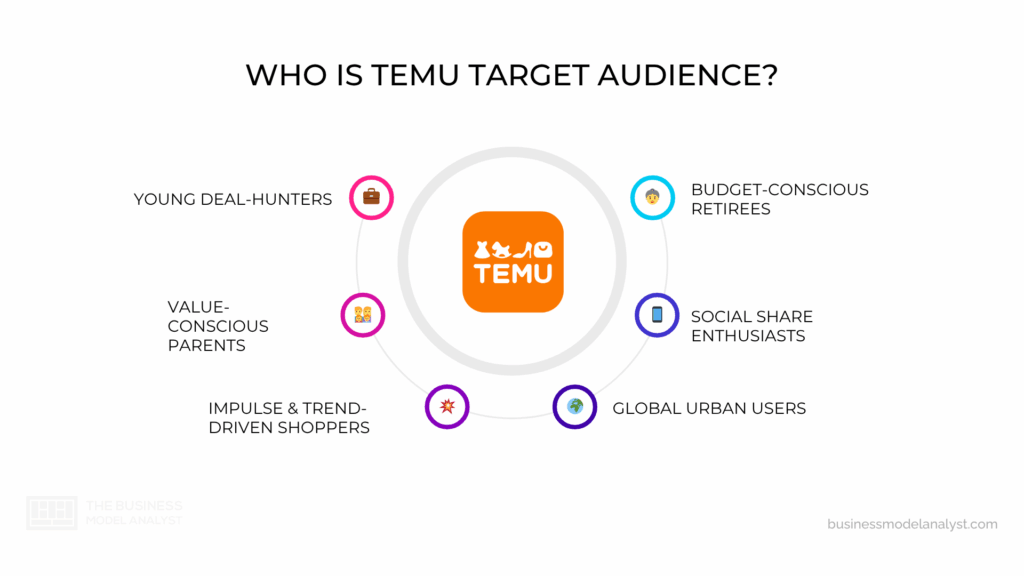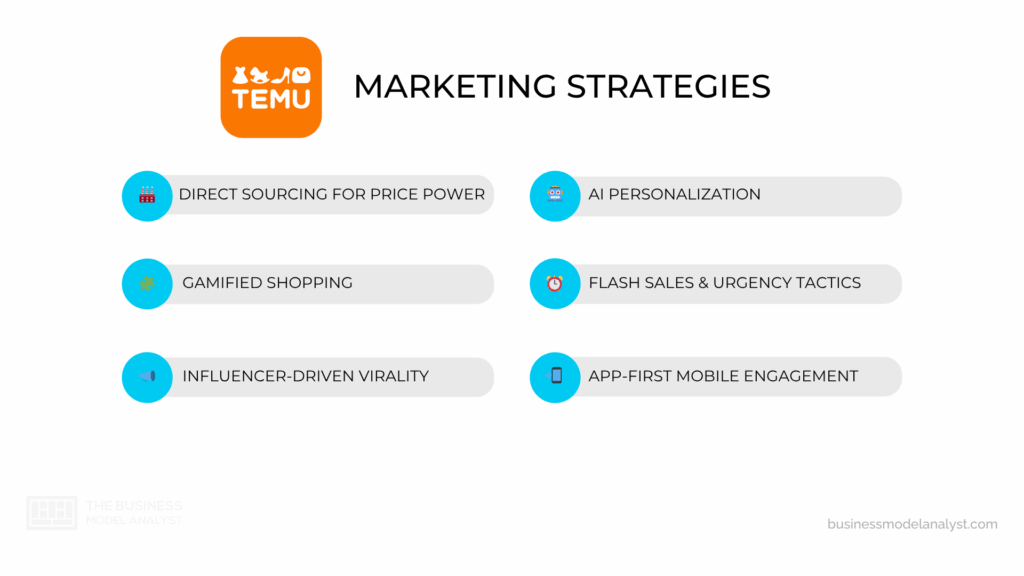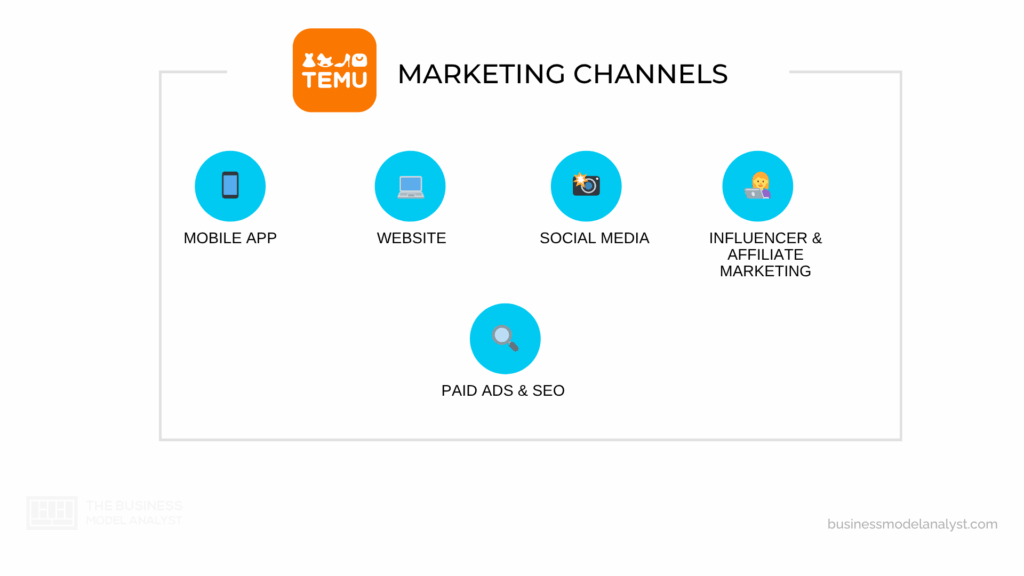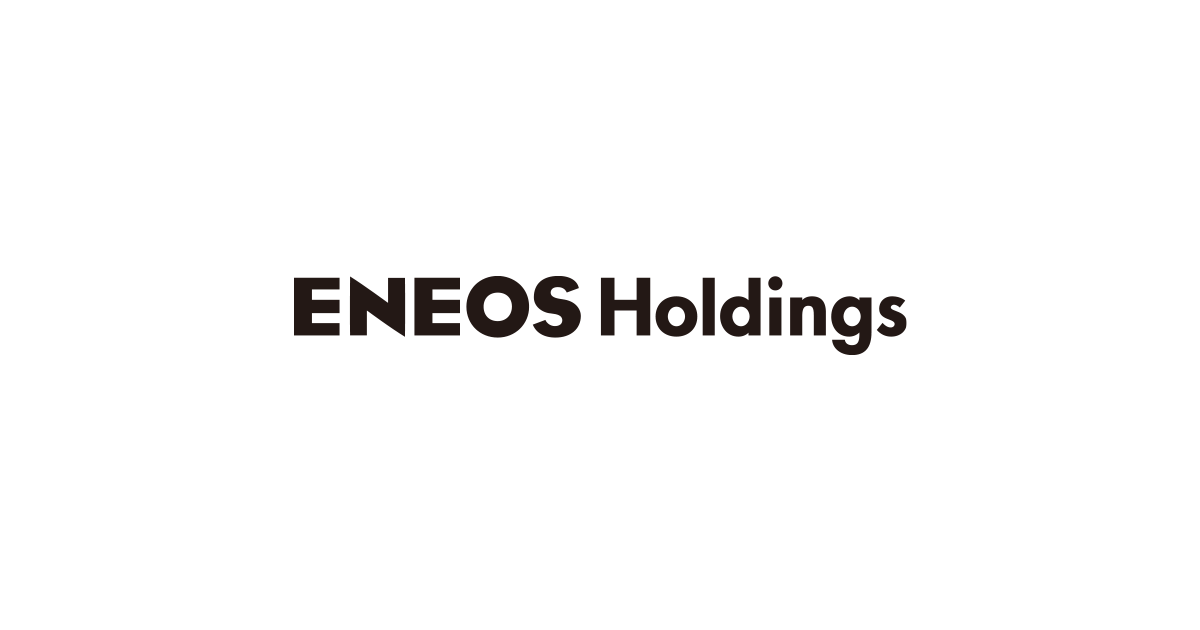Temu Marketing Strategy (2025)
reflects a data-driven, cost-effective approach in the competitive e-commerce landscape. Temu, launched in 2022 by PDD Holdings, positioned itself as a global online marketplace offering ultra-affordable goods—from fashion and electronics to home essentials. Its meteoric rise has reshaped consumer expectations around pricing, forcing rivals to rethink discount strategies.
What sets Temu apart is its direct-to-consumer supply chain. Instead of traditional middlemen, it connects buyers straight to manufacturers, translating into steep prices without sacrificing variety. This lean model, paired with aggressive subsidies and promotions, has enabled rapid expansion into markets like the U.S. and Europe—reducing acquisition costs and supercharging growth.
From a human-centered perspective, Temu taps into a universal trait: the thrill of finding a good deal. It speaks to value-seekers, trend-conscious shoppers, and budget-conscious households seeking surprising quality at unheard-of prices. Those late-night impulses to click “Buy” transform from guilty pleasures to accessible delights.
By riding broader trends—like socially enabled shopping and digital-first consumerism—Temu doesn’t merely compete; it redefines what online shopping can be. It blends psychological triggers with logistical finesse and marketing flair, creating a disruptor that resonates across demographics. In the following sections, we’ll explore how Temu’s strategy sets new benchmarks in retail innovation and customer experience.
Contents
Temu’s primary goals focus on democratizing online shopping and expanding its footprint across global markets. By offering ultra-low prices, it aims to make quality products accessible to all income levels. This mission is supported by a robust infrastructure inherited from its parent company, PDD Holdings, known for its efficient supply chain and consumer-focused innovation.
One core objective is . Temu invests heavily in subsidies, free shipping, and promotional credits to onboard users quickly. This helps it grow its user base rapidly while disrupting competitors. A hypothetical example: a U.S. shopper trying Temu for the first time might find $50 worth of goods priced at under $15—an irresistible hook that fosters repeat visits.
Another key objective is . Through gamified experiences like referral bonuses and daily check-ins, Temu turns browsing into an interactive routine. This boosts app stickiness and drives organic growth through social sharing.
Temu also focuses on . The platform leverages browsing and purchase behavior to tailor recommendations and boost conversions. For instance, users who browse fashion items frequently will see trending apparel deals prominently featured on their homepage.
Further, Temu prioritizes . By onboarding manufacturers directly, it expands product variety while maintaining control over cost and quality. Finally, —adapting offers, language, and cultural nuances per region—helps Temu build trust and relevance across diverse audiences.
These goals work synergistically to make Temu a compelling choice in the value-driven digital marketplace.

Temu targets a broad demographic but resonates strongly with consumers aged 18–45. These include college students, young professionals, budget-conscious parents, and retirees. Gender distribution is nearly even, with a slight tilt toward female users, especially in categories like home decor and fashion. Income-wise, Temu appeals primarily to middle- and lower-income households seeking maximum value.
Temu attracts value-seekers, impulse buyers, and deal hunters. These consumers appreciate convenience, low prices, and novelty. Many are motivated by the excitement of discovering unexpected bargains. The platform also draws trend-aware users who like experimenting with new products—those who enjoy sharing unique finds on social media or group chats. A common psychographic trait: preference for affordability without sacrificing choice or style.
Temu has rapidly expanded in North America and Europe, with strong adoption in urban and suburban regions. It adapts product listings, language, and shipping policies based on local markets. For example, while electronics and gadgets sell well in the U.S., household organizers and fashion accessories trend in Canada and the UK. Its global supply chain enables timely fulfillment across borders.
Temu users often engage in , aided by its gamified experience and heavy discounts. Many browse without a specific goal, exploring trending items, flash sales, and suggested bundles. Repeat users are driven by notifications, app-exclusive deals, and loyalty incentives. Despite being a budget platform, Temu builds habit through variety, personalization, and perceived exclusivity of deals.
By aligning its platform with these diverse consumer behaviors and profiles, Temu delivers a uniquely engaging and addictive shopping experience.
Temu offers an extensive catalog, ranging from fashion, electronics, and home goods to beauty products and niche gadgets—leveraging a multisided platform business model that connects manufacturers directly to consumers.
Its core offering is product variety at ultra-low prices. New items are added constantly, often reflecting trending social media aesthetics or seasonal needs. This fast-moving inventory encourages frequent browsing and serendipitous discovery—akin to walking into a digital dollar store with global access.
Temu’s pricing strategy is ultra-aggressive, driven by direct-from-manufacturer sourcing and platform subsidies. Products are priced significantly lower than competitors like Amazon or Shein. Flash sales, time-limited coupons, and gamified discounts push urgency and impulse buying. Temu doesn’t aim to compete on quality first—it wins on cost, making luxury-like purchases accessible for frugal shoppers.
Temu operates entirely online via a mobile app and website. Its e-commerce infrastructure is backed by PDD Holdings’ logistics and warehousing network, enabling cross-border fulfillment. While it has no physical presence, Temu ensures accessibility through mobile-first design, easy checkout, and wide geographic availability. It supports multiple currencies and payment methods to ease international adoption.
Temu’s promotional tactics are bold and digital-centric. It leans heavily on app download incentives, referral bonuses, and free gift campaignss—supported by distribution channels that prioritize mobile-first access and viral exposure.
Influencer collaborations on TikTok and Instagram—often showing “haul” videos—build social proof. User reviews, viral ads, and pop-up coupons drive action. A key promotional differentiator: gamification. Daily check-ins, spin-to-win wheels, and cashback loops make promotion feel like play.
Together, Temu’s 4Ps form a tightly integrated engine focused on affordability, entertainment, and volume.

Temu eliminates middlemen by sourcing directly from manufacturers, simplifying the business-to-consumer (B2C) relationship to deliver ultra-low prices at scale. This lean model, inherited from PDD Holdings, lets it offer jaw-dropping prices. A $5 wireless earbud set on Temu might cost $20 elsewhere. By undercutting traditional retailers, Temu attracts price-sensitive users and builds trust through perceived value.
Temu gamifies e-commerce with spin-the-wheel bonuses, daily log-in rewards, and referral incentives. This keeps users returning—not just to shop, but to play. It mirrors the engagement style of mobile games, turning shopping into an interactive, low-commitment form of entertainment.
The brand invests in TikTok and Instagram influencers to create relatable “Temu haul” content. These campaigns showcase quirky and affordable finds, encouraging viewers to explore the platform themselves. User-generated content helps Temu build authenticity and viral momentum without traditional advertising.
Temu tracks user behavior to offer tailored recommendations. AI models surface trending items based on click and purchase patterns. For example, a user who browses kitchen tools may later see top-selling baking accessories prominently featured. This enhances conversion and shopping satisfaction.
Urgency is a powerful tool in Temu’s strategy. Timed sales, limited-stock items, and “buy it before it’s gone” tactics encourage impulsive purchases. It’s the digital equivalent of a treasure hunt, keeping users curious and engaged.
Temu prioritizes its mobile app, offering exclusive deals and gamified elements not available on desktop—mirroring engagement strategies seen in platforms like WhatsApp’s business model, where constant interaction enhances retention. This mobile-centric approach supports greater personalization, notification-based re-engagement, and high app retention—especially among Gen Z users.
Leveraging PDD’s global logistics, Temu efficiently ships low-cost products across borders. It integrates warehousing, packaging, and last-mile delivery to maintain affordability despite shipping challenges—a major differentiator in global e-commerce.
These combined strategies turn Temu into a disruptive force in global online retail.

Temu reaches its audience through a streamlined yet high-impact combination of digital channels designed for global scalability and maximum engagement.
Temu’s mobile app is its primary channel. It’s the main point of interaction for users, offering exclusive deals, personalized feeds, and gamified experiences. The app’s intuitive design supports in-app purchases, push notifications, and daily engagement features like check-ins and rewards, making it central to user retention.
Though app-first, Temu also maintains a responsive website for broader accessibility. The desktop site supports browsing, ordering, and customer service, catering to users who prefer larger screens or are new to the platform. It’s also optimized for SEO, aiding in discoverability through search engines.
Temu heavily invests in platforms like TikTok, Instagram, and Facebook. Viral campaigns—often centered on user hauls or quirky product finds—drive brand visibility. TikTok in particular serves as a marketing powerhouse, with creators sharing “under $10 finds” and budget hacks that resonate widely.
Temu builds trust and reach through collaborations with micro- and macro-influencers. Affiliate programs incentivize content creators to promote the brand while driving measurable traffic and conversions. These partnerships are key for social proof and audience expansion.
Temu utilizes aggressive paid advertising across Google, Meta, and mobile ad networks. Banner ads, sponsored content, and video ads highlight deals and free shipping. SEO also plays a role—many users find Temu while searching for product alternatives or cheap versions of trending items.
These multi-channel efforts form an agile, cost-effective system that maximizes visibility and growth while minimizing reliance on traditional retail.
: Bypass intermediaries by sourcing or manufacturing products directly.
: Build relationships with producers or use platforms like Alibaba. Invest in inventory control software to streamline fulfillment.
: Lower costs mean better margins or more competitive prices, increasing customer value perception and loyalty.
: Add game-like features to your sales process—rewards, spin wheels, or points systems.
: Use tools like Smile.io or WooCommerce plugins to add gamification to your store. Include referral bonuses or flash discounts.
: Drives repeat visits and longer engagement, building habit around your brand.
: Partner with content creators to promote your products authentically.
: Offer free products or affiliate deals to micro-influencers on TikTok or Instagram. Track campaigns with unique links.
: Builds trust and reach through relatable, low-cost promotions, especially for visually driven or niche products.
: Limited-time offers that encourage impulse buying.
: Implement countdown timers on your website or offer 24-hour discounts via email.
: Creates urgency and boosts conversion rates by reducing hesitation.
: Use browsing and purchase behavior to guide content and recommendations.
: Use email platforms like Klaviyo or CRM systems that segment users based on interaction.
: Delivers more relevant offers, which increases both satisfaction and sales.
: Ensure your shopping experience works seamlessly on smartphones.
: Use mobile-friendly site design, offer SMS updates, and test all interactions on mobile. Consider a lightweight app for frequent users.
: Reaches on-the-go buyers who increasingly shop via mobile.
: Expand internationally while tailoring content to local markets.
: Offer local currencies, shipping options, and translated content. Tools like Shopify Markets help automate localization.
: Expands your audience without losing cultural relevance or trust.
These actionable steps can help your business scale like Temu—through sharp pricing, smart tech, and customer-focused strategies.
Temu has emerged as a retail disruptor by redefining value, speed, and scale in e-commerce. Its bold pricing, gamified experience, and global logistics give it an edge that resonates with today’s digital-savvy, deal-hungry shoppers. Unlike traditional platforms, Temu doesn’t just sell—it entertains and surprises, turning shopping into a dynamic, repeatable habit.
Its ability to localize globally, personalize at scale, and leverage viral marketing channels showcases a new blueprint for retail success. Whether you’re a startup or an established business, Temu offers clear lessons: simplify access, prioritize user engagement, and let data drive decision-making.
In an era where consumers crave affordability and novelty, Temu’s model offers a compelling path forward—one where technology and customer delight go hand in hand.










